
According to the Sumerian king list, dDumu-zid "fisherman" became booty by the single hand of En-me-barage-si.
According to the Sumerian king list, dDumu-zid šu-peš
šu-peš is to be identified with šu-ku6 "fisherman" as is generally assumed, for the meaning of šu-peš is unknown.
Sumerian: pešku6 = "a fish"
Sumerian: šu = "hand" Sumerian: peš = "three"
 |
| A captive being executed |
Wall painting from Tomb 100 at Hierakonpolis, ca. 3500-3200 BC
HK43 (the non-elite cemetery) Burial 147 belonged to an elderly pair found buried together. The male was aged 60+ and the female was aged 50-59. The heads had been cut off and placed on the chests of the essentially intact bodies. Over 15 cut marks were found on the neck vertebrae of the male, in addition, potsherds were found stuffed into the nasal cavity of the man's skull.
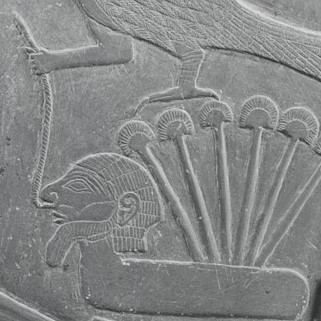 |
| Narmer Palette (recto) from "main deposit" at Hierakonpolis, ca. 3000 BC |
HK43 Burial 350 was young adult male. The cut marks on his first, second and third cervical (neck) vertebrae are distinct, and additional cut marks on both his mandible (lower jaw) and skull were found. There are two deep cut marks on the lower right side of the mandible, and two vertically oriented cut marks on the left mastoid process, the area just below the left ear. Marks on the forehead are the most extensive and extend for 80.69mm.
 |
| Battle scene |
Narmer Palette (recto), Hierakonpolis
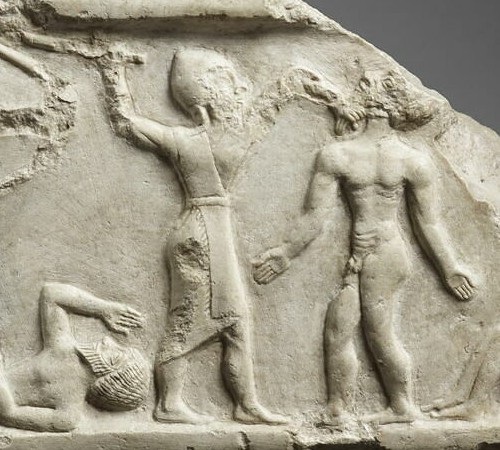 |
| Stele, Girsu, 2278-2270 BC |
Scraps of human bone found in and to the east and southeast of HK6 (the elite cemetery) Tomb 23 suggest that three individuals (all adults, one female) were originally buried in it. The special columned area called an offering chapel at Tomb 23 deposited a human vertebra with cut marks indicative of decapitation. It is also from the chapel that fragments of near life size human stone statue were recovered. The statue's size and shape are based on the well-carved nose and two ears, while the rest of it is represented by over 600 small fragments that have proved difficult to mend. Two clay ears from different masks were also found at Tomb 23.
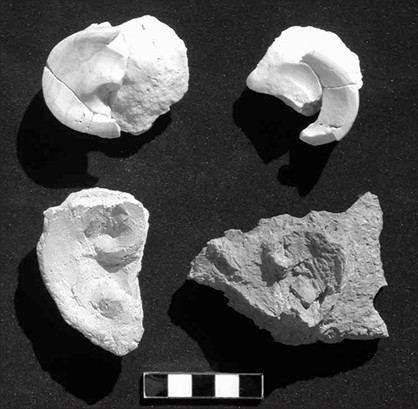 |
| The limestone ears of the statue above, the clay ears from the Tomb 23 masks below |
 |
| Dorsal view of the skull of a crocodile (the origin of "White Crown") |
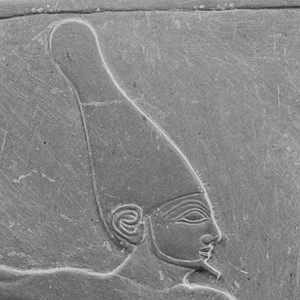 |
| Narmer Palette (recto), Hierakonpolis |
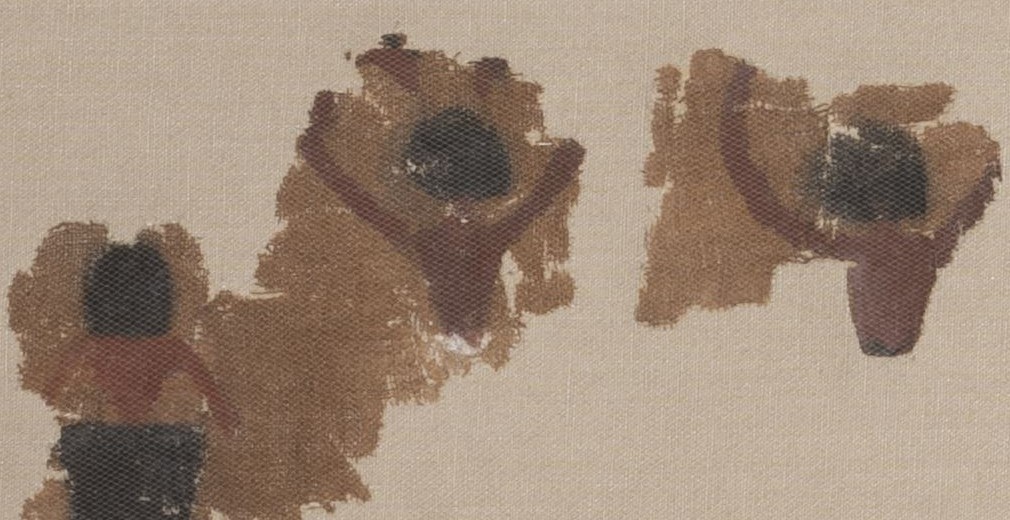 |
| Gebelein painted linen, Gebelein, ca. 3600 BC |
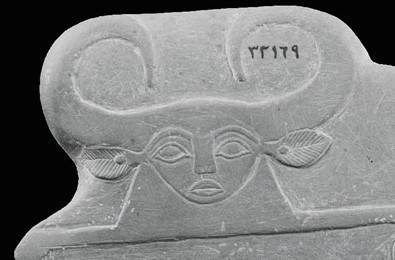 |
| Narmer Palette (recto), Hierakonpolis |
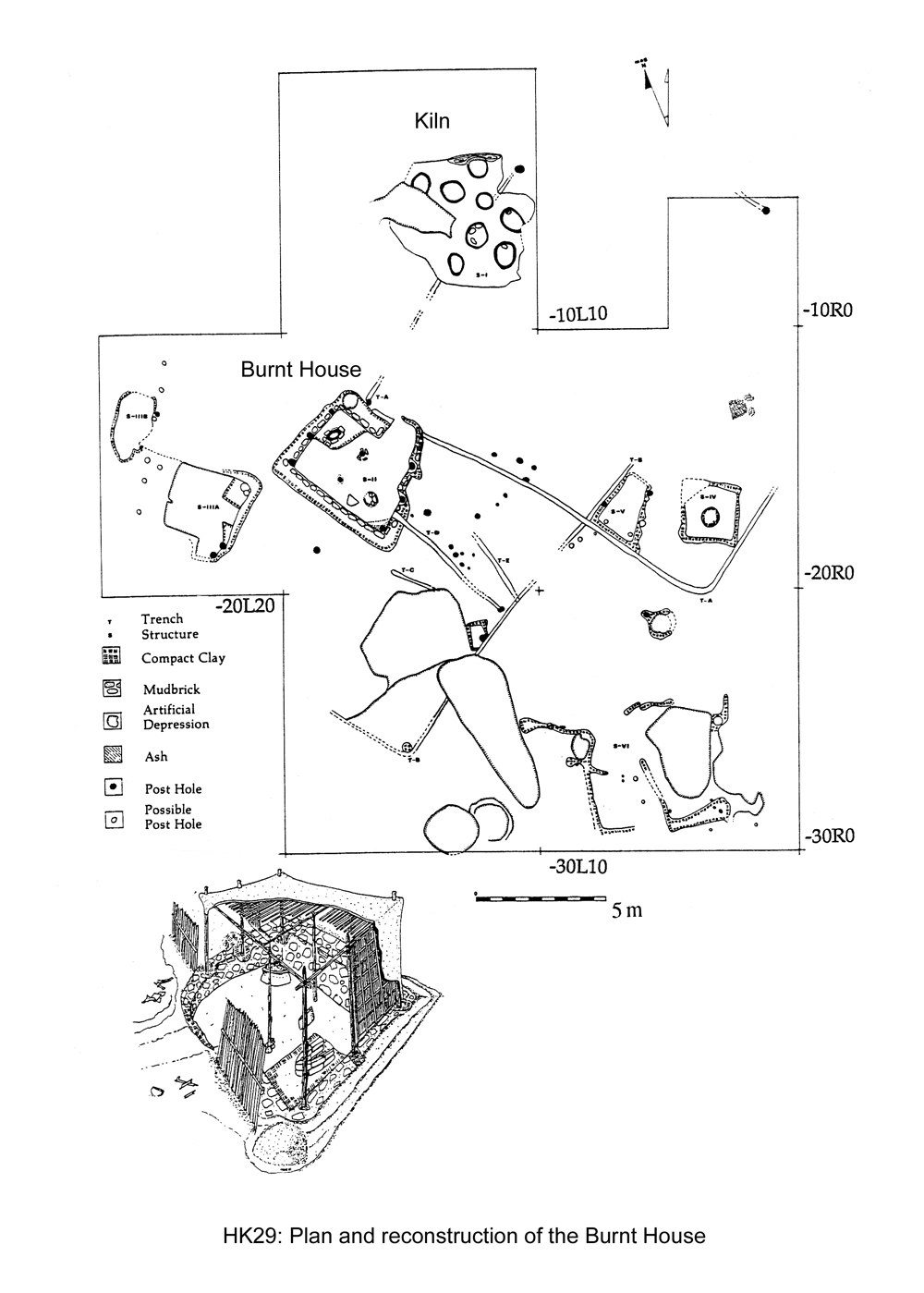 |
At the edge of the main Predynastic town (the settlement cluster HK29/29A) in Hierakonpolis is the house and workshop of a potter. The evidence suggests that one day, the flames from his pottery kiln, located just over 5m away, spread to the house and burn it to the ground. The remnants of foundation trenches for post and reed walls of additional buildings and animal pens as well as the eroded (unburnt) remains of other sunken floor structures surround the house, but some may date to earlier or later phases of occupation. Several phases of habitation were observed, so that even after the fire, the area was not abandoned.
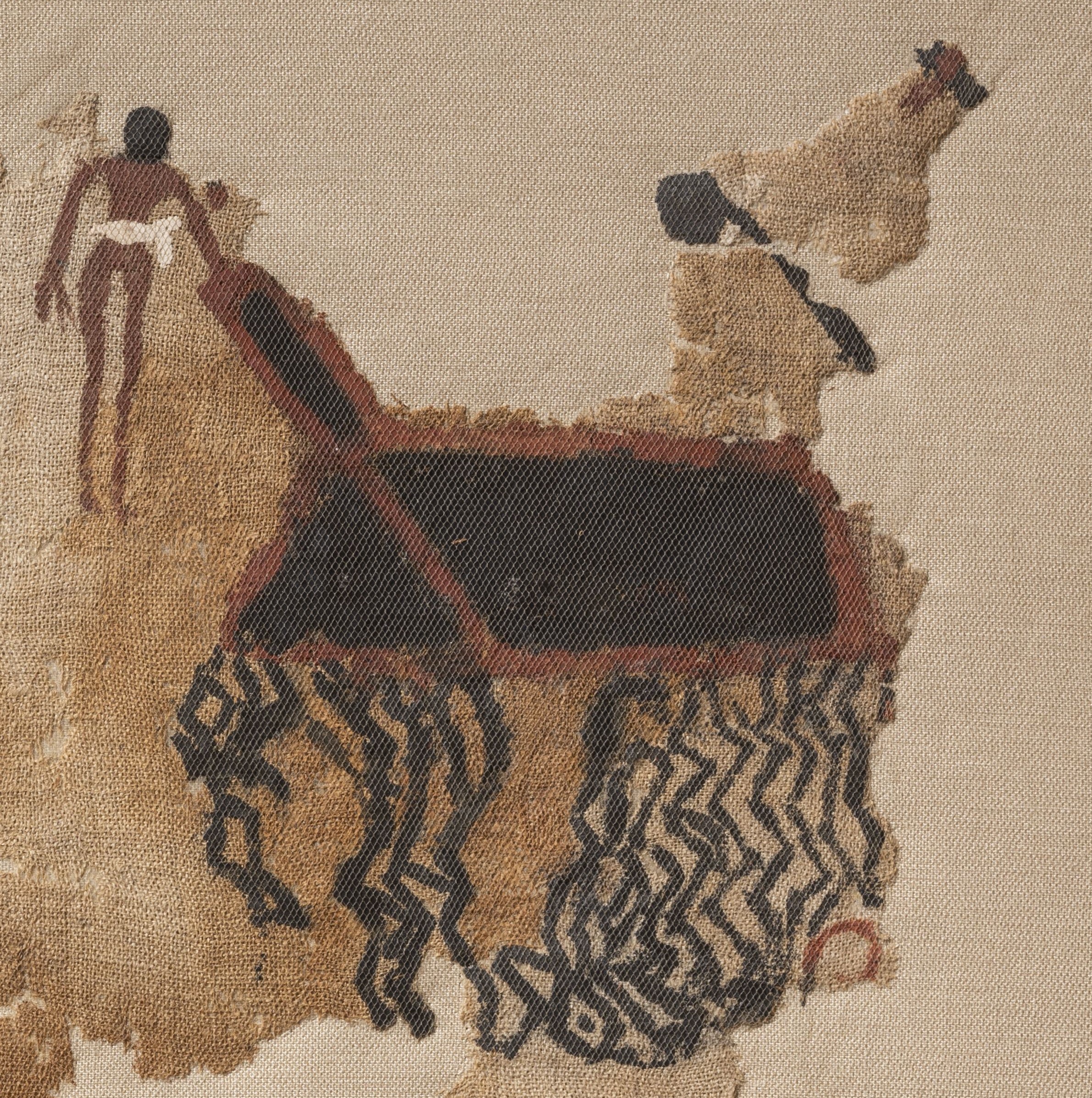 |
| A man fleeing from a house with reed walls on Gebelein painted linen, Gebelein |
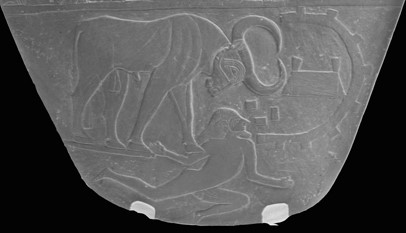 |
| Narmer Palette (verso), Hierakonpolis |
According to the Sumerian king list, dDumu-zid šu-peš
šu-peš was interpreted as "three stones" on the verso of the Narmer Palette.
Akkadian: šû = "a stone or shell", Sumerian: peš = "three"
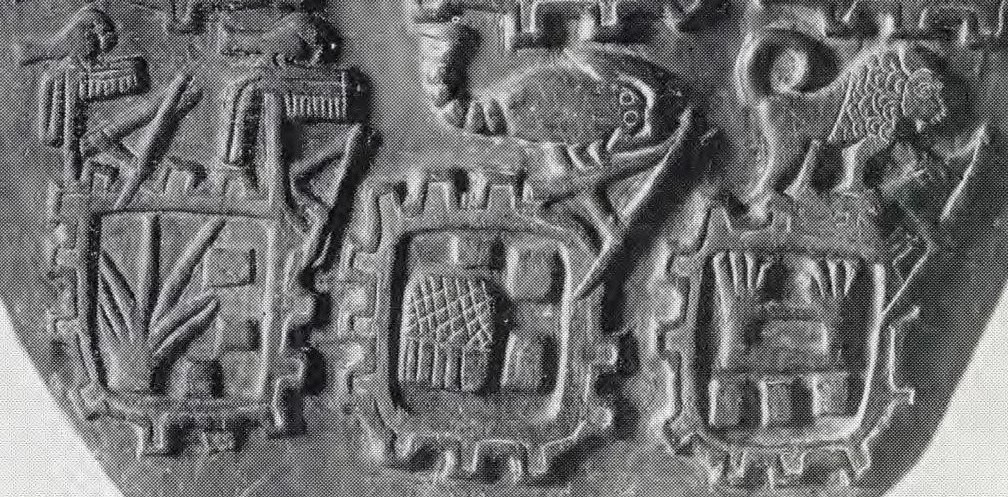 |
| Libyan Palette (back), Abydos, ca. 3200-3000 BC |
 Proto-cuneiform SZU (šu) = "hand"
Proto-cuneiform SZU (šu) = "hand"
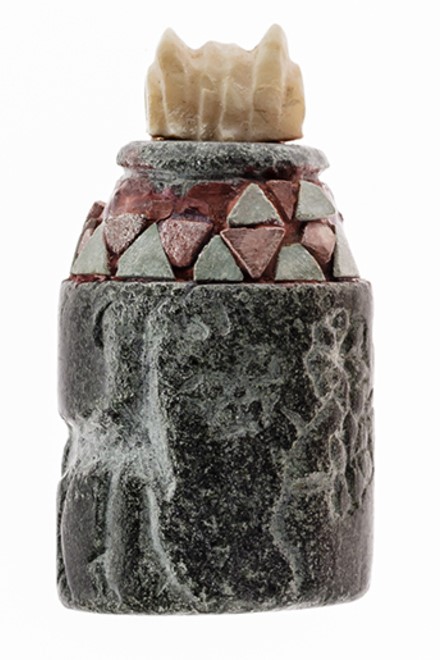 |
| Cylinder seal, Khafajeh, 3350-2900 BC |
References:
https://isac.uchicago.edu/sites/default/files/uploads/shared/docs/as11.pdfJune 30, 2024 Takahiko Nakagawa